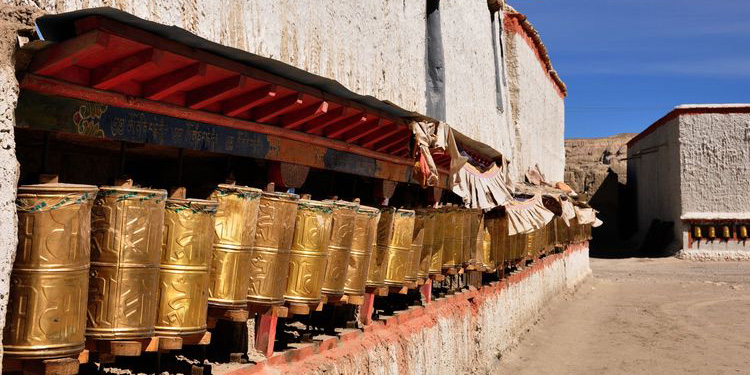

 marcopolo@chinatoursnet.com
marcopolo@chinatoursnet.com
Home / Tibet Travel Guide/ Attraction

Tholing Monastery
.png)
.png)
Tholing Monastery
.png) Tour Code : C2441
Tour Code : C2441
.png) Type : Historic sites
Type : Historic sites
.png) City / Province : Tibet
City / Province : Tibet
.png) Built in : 996 A.D
Built in : 996 A.D
Highlights
Tholing Monastery, located in the first Buddhist temple built in Ali District, Zada County, Tibet Autonomous Region, Southwest China. It is integrates the architectural styles of India, Nepal and Tibet, visitors can experiences the historical sites of Tibetan Buddhism.
Tholing Monastery
Introduction
Tholing Monastery is located in the Ngari Region of western Tibet, Zanda County at an altitude of 3,800 meters above sea level. In the local language, Tholing means “hovering in the sky forever”. The monastery was constructed in 997 by Yeshe-O, the second King of the Guge Kingdom. Yeshe-O was a staunch Buddhist at some point he sent 21 youths to learn Tantric Buddhism in Kashmir. Out of all these only two of them were able to survive and come back amongst them Rinchen Zangpo. Rinchen Zangpo became a great Buddhist adaptor and translator and was able to translate Buhhist sutras and develop Buddhism at Tholing, and in this way Yeshe-O set up a monastery to commemorate the efforts.
However, over time he was captured and defeated after working day and night to host Atisa to Guge Kingdom to promote Buddhism to the extent of sacrificing his own life to be able to send ransom to Atisa. When Atisa arrived to Tholing Monastery it acquired a higher status to become the greatest religious center in Tibet under the royal patron of the Guge Kingdom. The influence of Guge Kingdom and its monastic center was recognized far and wide and in India it came to be known from Kashmir to Assam. In 1076 a religious ceremony to memorize the nirvana of Atisa was held at the temple and the subsequent years graced the monastery with numerous vicissitudes making it a recognized cultural relic of national importance under the protection of the state at its 1000th anniversary.

Things to see and do on Tholing Monastery
The complex is made up of three temples namely, the Yeshe-O Temple, the Lhakhang Karpo and the Dukhang.
Halls of Tholing Monastery
The main building here is the Jiasha Hall which serves as a symbol of the monastery. The central hall symbolizes the highest mountain in Buddhism which is Mount Meru and the other small halls represent the four continents. The statue of Tathagata Buddha is also enshrined in this central hall. There are also pagodas situated in four different corners and they represent the four Heavenly Kings that guard the sutras. From above the main hall looks like a Chinese character.
There is a Red Hall which used to be the assembly location for monks. Visitors can see murals that are preserved at this hall with tones of stories behind their existence. One most distinct mural is the mural of the Sixteen Vajra Dancers.
At the White Hall visitors can see the statue of Sakyamuni. The murals found here have pictures of Atisha, the king and many important lamas. Initially there were 14 scriptures but currently their pedestals are all that can be seen.
Artifacts of Tholing Monastery
Visitors can see crafts at the Tholing Monastery which carefully incorporate the craftwork of the Buddhist statues and architecture of the neighboring countries of India, Nepal and Ladakh The style and taste of this murals spell out the artistry of the Ruins of Guge Kingdom.
Pagodas of Tholing Monastery
Another interesting feature to note is a group of pagodas beside Xiangquan River. They sum up to a total of 180 pagodas. These pagodas are arranged orderly in hundreds of meters line and are all made out of earth. During sunset there is a fascinating reflection of the sun's rays from the yellow pagodas that no visitor misses to admire.
Travel Map
Answers to questions
 Marcopolo@chinatoursnet.com
Marcopolo@chinatoursnet.com


Phone:+86-13683536536
WhatsApp/iMessage:+86-13683536536
WeChat:chinatoursnet
Tholing Monastery Photos
.png)
.png)
.png)
.png)
.png)